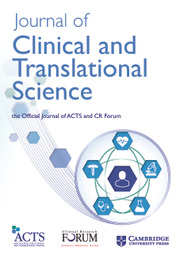No CrossRef data available.
Article contents
106 Unraveling the genetic architecture of aging through comparative genomics
Published online by Cambridge University Press: 11 April 2025
Abstract
Objectives/Goals: To identify the genomic mechanisms underlying cross-species regulation of longevity among mammals and birds and to characterize the impact of those conserved pathways on human aging. More broadly, this study aims to develop a novel evolutionary approach to understand the genetics of complex traits. Methods/Study Population: High-quality genome sequences for 194 bird species and 295 mammal species with reliable longevity and body size data were obtained from publicly available resources. The data include coding sequence alignments of 16,863 mammalian and 14,565 avian one-to-one orthologous genes. Gene-wise relative evolutionary rates (RERConverge) and maximum likelihood phylogenetics (PAML) were computed to assess for evidence of purifying selection and positive selection for longevity. As part of ongoing analysis, human orthologs of selected results will be examined in the UK Biobank for validation. Results/Anticipated Results: Preliminarily, we have found a signal of concordant positive selection between two classes of vertebrates separated by hundreds of millions of years. Several genes show signals of positive selection in long-lived species of both birds and mammals. Ongoing work focuses on elucidating the relationship between relative evolutionary rates and positive selection, the overlap in selection signature between long-lived animals with large body sizes and those who are exceptionally long lived for their body size, and further elaborating on convergence between mammals and birds. Discussion/Significance of Impact: Currently, most scientific knowledge about aging is from experiments on short-lived model organisms. By systematically studying the genomes of long-lived mammals and birds, we aim to develop a new method for studying complex traits and uncover novel insights into the mechanisms of longevity.
Information
- Type
- Biostatistics, Epidemiology, and Research Design
- Information
- Creative Commons
- This is an Open Access article, distributed under the terms of the Creative Commons Attribution-NonCommercial-NoDerivatives licence (https://creativecommons.org/licenses/by-nc-nd/4.0/), which permits non-commercial re-use, distribution, and reproduction in any medium, provided the original work is unaltered and is properly cited. The written permission of Cambridge University Press must be obtained for commercial re-use or in order to create a derivative work.
- Copyright
- © The Author(s), 2025. The Association for Clinical and Translational Science

